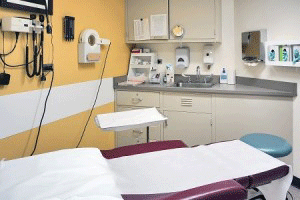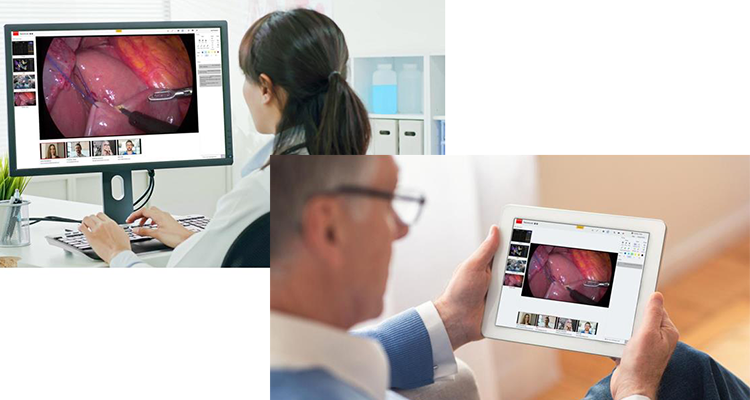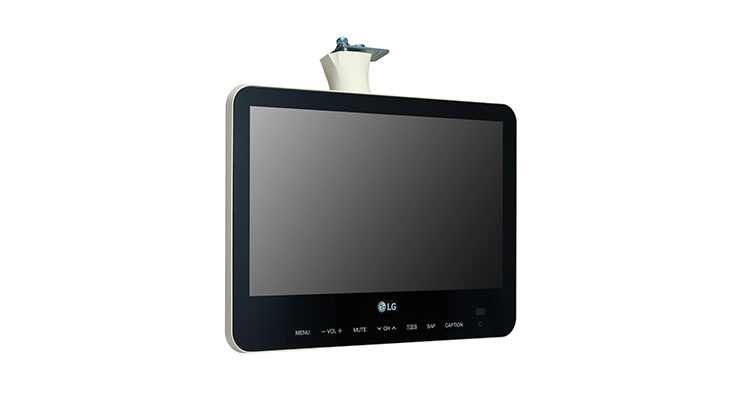InfoComm: Shhh, My Cough is My Business
 By Brad Grimes
By Brad Grimes
InfoComm International
You know how you sit in the waiting room at the doctor’s office for, like, 45 minutes? Then they take you through a door and into an exam room — where you wait some more? Have you ever sat there, not knowing what to look at, and overheard your doctor talking to someone else in the next room? If you’ve heard the doctor diagnose a cough or discuss anything about another patient’s health, you may have inadvertently been party to an invasion of privacy.
I was talking to a friend last weekend. He has a degree in industrial design and worked in construction. Recently, he’s been designing doctors’ offices. Specifically, he’s been designing privacy solutions for doctors’ offices, to help them comply with the Health Insurance Portability and Accountability Act (HIPAA), which, among other things, governs the privacy of people’s health information. (Read this InfoComm special report, from 2013.)
My friend has a couple primary tools at his disposal. First is acoustical treatments. He says most offices put in acoustical foam, which is a start. But the cost of real, professional, soundproofing acoustical treatment can add up, when you consider all the rooms that might need soundproofing. So he specializes in his other HIPAA privacy tool: sound masking. And he’s doing it because doctors are asking for it.
According to engineering consulting and research firm FMI, construction of healthcare facilities is expected to grow 6 percent in 2015, after nudging ahead 2 percent this year. There are a few reasons for this. As I’m sure you’ve heard, Baby Boomers are getting old and will be needing a bunch of healthcare. And have you heard of urgent care? I hadn’t until recently (I fortunately haven’t need to.) It’s not a clinic and it’s not an ER. In an effort to keep people from crowding emergency rooms with less-then-emergencies, the healthcare system is building out other outposts where they can seek treatment. And oh-by-the-way, EVERYONE is getting into healthcare these days. Look at all the places you can get this year’s flu shot. You can walk into Walgreens or Wal-Mart health clinics (aka, Big Box Health Care). All those new places where people can get healthcare? They need to comply with HIPAA, too.
As AV pros know, sound masking involves injecting noise (white, pink) into a space to cover up other sounds. It can be through a network of dedicated in-ceiling speakers, or sometimes through an existing paging/PA system. It requires some thought and planning. My buddy says there are time when certain facilities don’t want any white noise to block out non-HIPAA-related information. So they want the option of disabling a sound masking solution in certain rooms. Which, of course, presents the challenge: How does office staff ensure it reverts back to HIPAA compliance (which has to be the default) if they should ever disable their sound masking system? A degree of control/automation would come in handy.
Past research has indicated that healthcare is a growing market for AV. Telemedicine is sort of the sexier high-tech healthcare application. But don’t snooze on speech privacy/sound masking/HIPAA compliance.
The trick will be figuring who the right customer is. Is it people like my friend, who design and build out doctors’ offices? Building managers? These new Big Box Health Care outlets? The doctors themselves? Healthcare professionals have been well indoctrinated into speech privacy (my supermarket pharmacist maintains a separate, isolated counter window for discussing customers’ prescription questions). As doctors open new, modern offices — competing with each other to serve patients — they’ll see the merits (and requirements) of employing modern AV technology to maintain patients’ privacy.
This column was reprinted with permission from InfoComm and originally appeared here.





